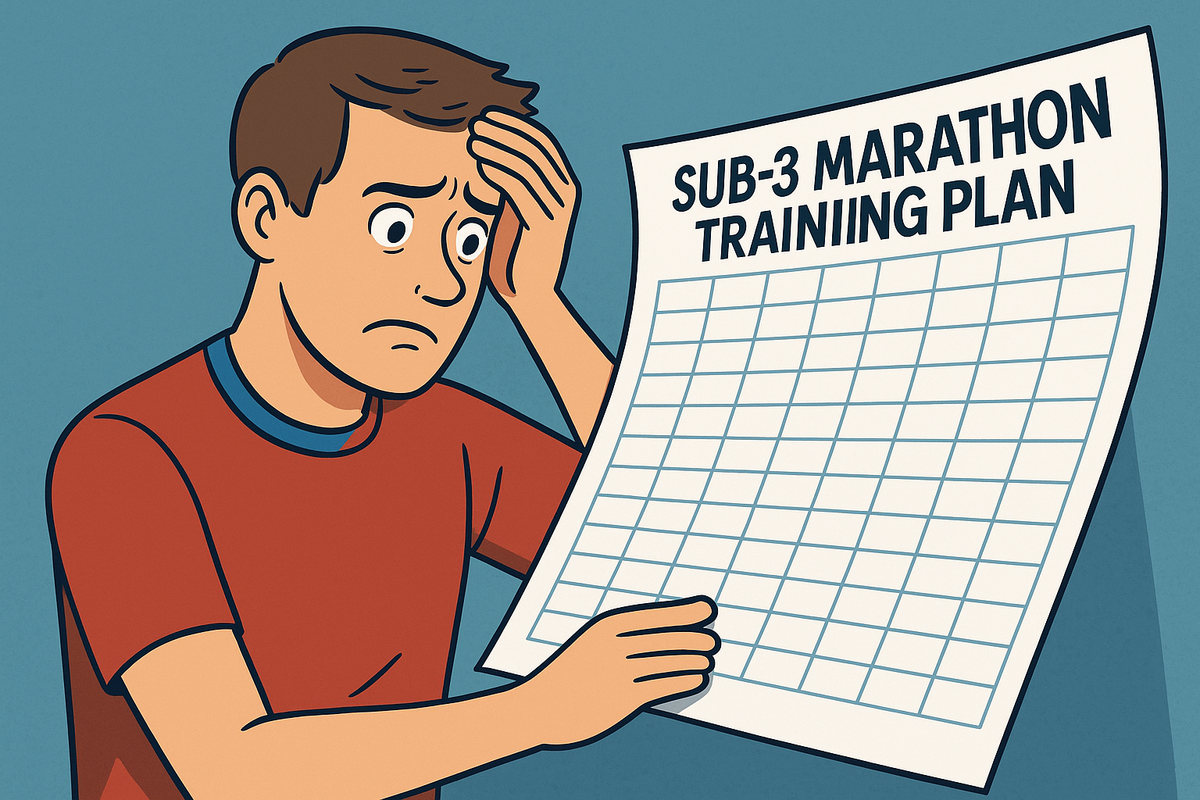What’s the best training plan for a sub-3 marathon?
There’s no one-size-fits-all plan for sub-3. But with smart structure, personalisation and consistency, you can build a training block that really works.

It’s one of the most common questions among aspiring sub-3 runners: what training plan should I follow?
There’s no shortage of options. The internet is awash with downloadable grids, and whole books are devoted to intricate systems and scheduling philosophies. But for all their precision, many of these plans feel either too dense to digest or too rigid to adapt to real life.
That’s why I’m hesitant to add more grids to the mix. The truth is, there is no one-size-fits-all training plan for sub-3. It’s not a formula or a checklist. A good plan must be personal – shaped by your current fitness, your experience, your available time and your appetite for risk. But that doesn’t mean there aren’t common threads. Here are a few broad pointers.
1. Invest in a plan – at least once
If you’re chasing sub-3 for the first time, it’s worth spending a bit of money to get a structured plan that fits you. That could mean hiring a coach – not forever, but long enough to set your training in motion, I used and would highly recommend the Online Running Coach – or using a solid app like Runna, Final Surge, TrainingPeaks, or Garmin Coach. Even if you eventually take control yourself, a good framework can give you a head start.
2. Mileage is your foundation
While some runners have broken three hours off less, you’ll give yourself the best shot by averaging around 100km a week, with peak weeks in the 140–160km range. This volume helps build aerobic depth, improves your running economy and increases your resilience over 42.2km. Sub-3 is a performance built on endurance, and high mileage is the most proven way to develop it.
3. Know the key ingredients
Every sub-3 training cycle should include a few core elements:
- A weekly long run, gradually building to at least 20 miles (ideally more)
- A regular interval session to sharpen leg speed and raise your VO2 max
- A tempo or threshold run to build stamina and race-specific strength
- Plenty of easy running to fill out your volume and allow for recovery
The long run is non-negotiable. The sessions should be spaced with care – avoid back-to-back hard days, and listen to your body throughout.
4. Make adjustments without guilt
Even the best plans need to bend. You’ll have weeks where you’re tired, busy or battling niggles – and others where everything clicks. Don’t be afraid to move things around. If a club track session falls on a Tuesday evening but your intervals are pencilled in for Wednesday morning, adjust the plan accordingly to ensure sufficient recovery time. The goal is consistency over time, not perfection week to week.
5. Prioritise what matters
Your training time and energy are finite, so use them well. Give priority to the runs that drive your fitness – long runs, tempos, intervals and easy mileage – and don’t get distracted by complex session designs unless they have a clear purpose. The occasional experimental workout can be fun, but the bread-and-butter runs you repeat week after week will do most of the heavy lifting.
6. Build your intensity gradually
Too many runners jump straight into heavy sessions early in the block. But your body adapts slowly. Spend the first few weeks building your base, then layer in speed and specificity. Don’t worry if you’re not smashing intervals from week one – peak fitness should come near race day, not six weeks out.
7. Include cutback weeks
Every third or fourth week, dial things back. Reduce volume by 20–30 percent, ease off the intensity, and allow the adaptations to take hold. These step-back weeks are what allow you to keep building without burning out. They’re not a break – they’re the plan.
8. Use races as stepping stones
Half marathons, 10Ks and even parkruns can play an important role in your build-up. They offer a chance to rehearse pacing, test gear and sharpen your mindset. Slot them in every few weeks, and treat them as mini-targets – not just check-ins, but workouts with purpose.
9. Respect the taper
In the final one to two weeks before race day, resist the urge to cram. Let the volume drop, but keep some sharp sessions in the mix. Tapering is about dropping the volume, not always the intensity of the workouts. A good taper leaves you slightly hungry – not exhausted or undercooked.
10. Reflect and refine
After each build-up, take stock. What worked? What didn’t? Where did you plateau or improve? Even if you followed a published plan, your experience is the most valuable data you’ll ever have. Use it to shape the next one.
In the end, the best sub-3 plan is the one that fits your life, builds your confidence and keeps you running strong week after week. Don’t just copy someone else’s structure. Understand the principles, apply them to your context and trust that, with enough time and consistency, the result will follow.
Enjoyed this article? Help keep Sub-3 running — support us with a coffee.
To help fund the running of the site, Sub-3 is an Amazon Associate and earns from qualifying purchases. We only recommend gear or kit that has genuinely helped in our own running and that we believe is worth considering.



